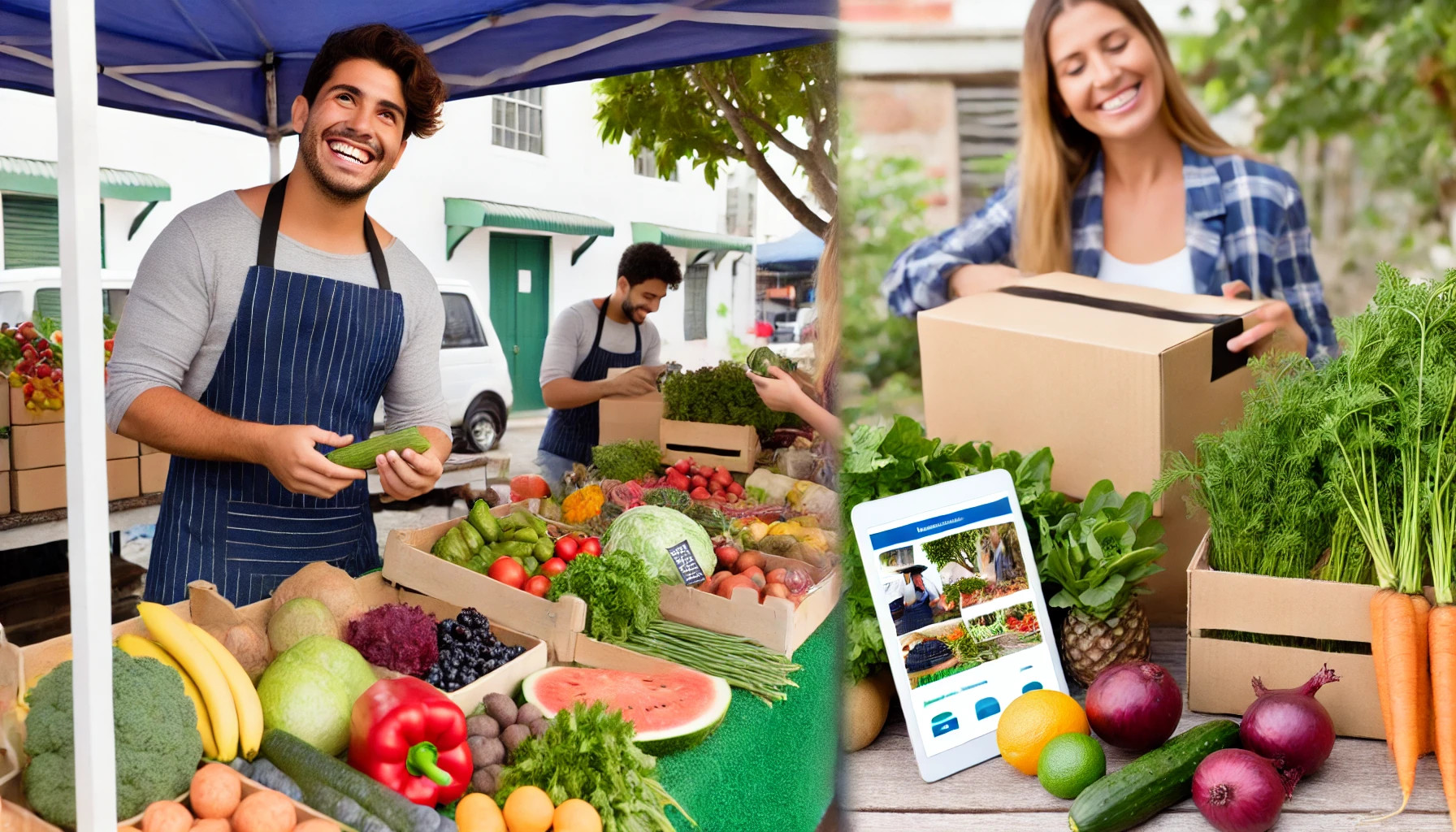Einführung (2 min)
In diesem Abschnitt wird das Konzept der alternativen Lebensmittelnetzwerke (ALNs) vorgestellt und ihre Rolle bei der engeren Verbindung von Lebensmittelproduzenten und Verbrauchern innerhalb lokaler und nachhaltiger Lebensmittelsysteme untersucht. Die Nutzer erhalten ein Verständnis dafür, wie ALNs Transparenz, Vertrauen und das Wohlergehen der Gemeinschaft durch direkte Beziehungen und kurze Vertriebskanäle priorisieren.
Was sind alternative Lebensmittelnetzwerke?
Alternative Lebensmittelnetzwerke (ALNs) sind Systeme, die Produzenten und Verbraucher sowohl im geografischen als auch im sozialen Kontext einander näher bringen sollen. Diese Netzwerke konzentrieren sich auf Nachhaltigkeit und lokale Beschaffung und fördern direkte Beziehungen, die Transparenz und Vertrauen in der Lebensmittelversorgungskette schaffen. Im Gegensatz zu traditionellen, groß angelegten Vertriebsmethoden arbeiten ALNs über Kanäle wie Bauernmärkte, gemeinschaftsgestützte Landwirtschaft (CSA), Lebensmittelgenossenschaften und Online-Plattformen.
Eines der Kernprinzipien von ALNs ist die Betonung der lokalen Produktion und des kurzen Vertriebs. Durch die Priorisierung der lokalen Produktion tragen diese Netzwerke dazu bei, die Umweltbelastung zu verringern und die lokale Wirtschaft zu unterstützen. Der minimale Einsatz von Zwischenhändlern stellt sicher, dass die Verbraucher eine direkte Verbindung zur Quelle ihrer Lebensmittel aufrechterhalten, was das Vertrauen und die Transparenz der von ihnen konsumierten Lebensmittel insgesamt erhöht.
ALNs sind nicht in den verschiedenen Ländern einheitlich; Sie werden entsprechend den spezifischen sozialen, kulturellen und wirtschaftlichen Kontexten jeder Region angepasst und transformiert. Diese Anpassungsfähigkeit macht ALNs für die Förderung nachhaltiger und widerstandsfähiger Lebensmittelsysteme unerlässlich. Durch die Verkürzung der Distanz zwischen Lebensmittelproduktion und -verbrauch verringern sie den ökologischen Fußabdruck der Lebensmittelverteilung und halten die wirtschaftlichen Vorteile in den lokalen Gemeinschaften.
Neben der Bereitstellung frischer, lokaler Lebensmittel spielen ALNs eine Schlüsselrolle dabei, Gemeinschaften zusammenzubringen. Sie fördern die Zusammenarbeit das Teilen von Ressourcen und gegenseitige Unterstützung. Kurz gesagt, geht es bei ALNs darum, eine nachhaltigere, transparentere und gemeinschaftsorientiertere Art und Weise zu schaffen, Lebensmittel vom Bauernhof auf den Tisch zu bringen.



